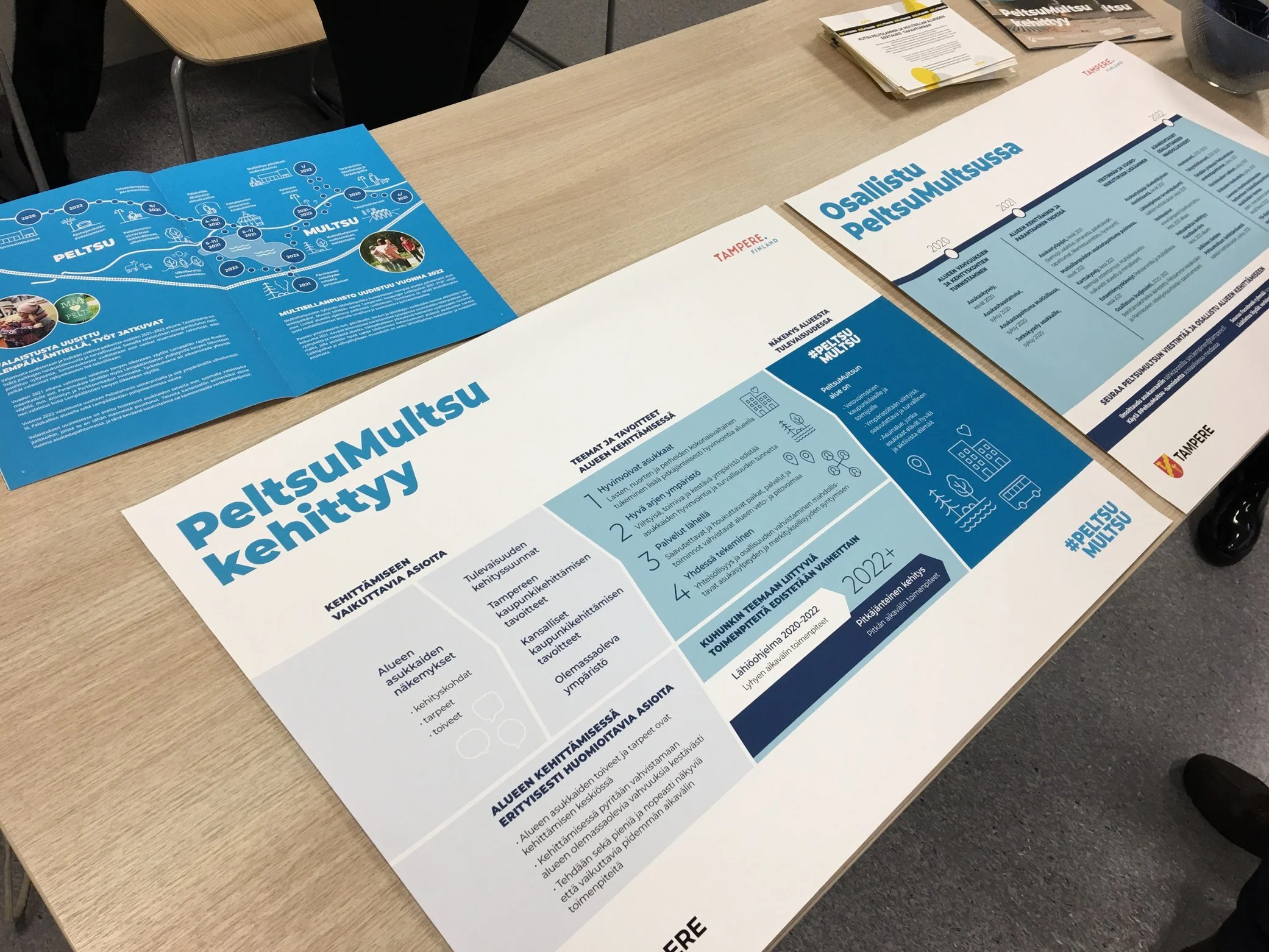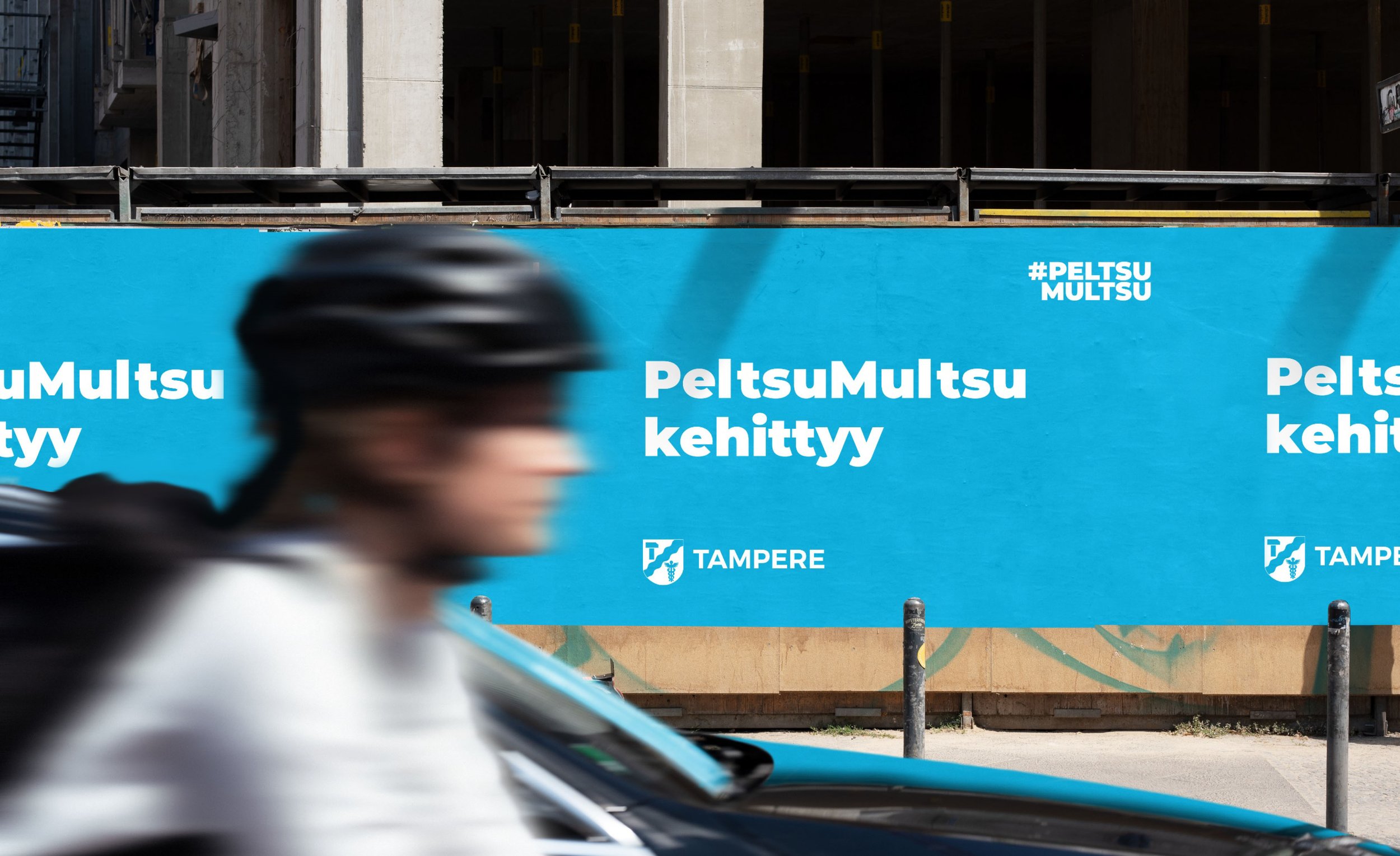
#PeltsuMultsu Neighborhood and Identity Development
Developing citizen-driven brand identity, guidelines and vision for neighborhood development
2020-2022 / Client project at Pentagon Design / Client: City of Tampere
Team: Heidi Hyyitiäinen, Nuppu Gävert, Virva Haltsonen, Katri Stolt, Linda Vanni, Heini Lehtinen
My role: Co-design and facilitation of workshops and events / Stakeholder communication / Qualitative research, analysis and insights / Brand development / Content design for brand material, manuals and communication
Picture: Katri Stolt / Pentagon Design
Helping the City of Tampere to develop the suburbs of Peltolammi and Multisilta into thriving, appealing and citizen-centered neighborhoods
Lähiöohjelma is a programme funded and initiated by the Ministry of the Environment that aids the sustainable development of suburban neighborhoods in different cities of Finland to prevent segregation. Among the selected neighborhoods in the 2020-2022 programme were Peltolammi and Multisilta, two neighboring suburbs located in Tampere.
Our team at Pentagon Design was asked to collaborate to ensure resident and stakeholder participation and to identify means for citizen driven development. The goals included providing tools for the city, developers and urban planners to ensure citizen-centric development, as well as to create a sense of pride and positive cycle among different resident groups about their shared neighborhood.
-
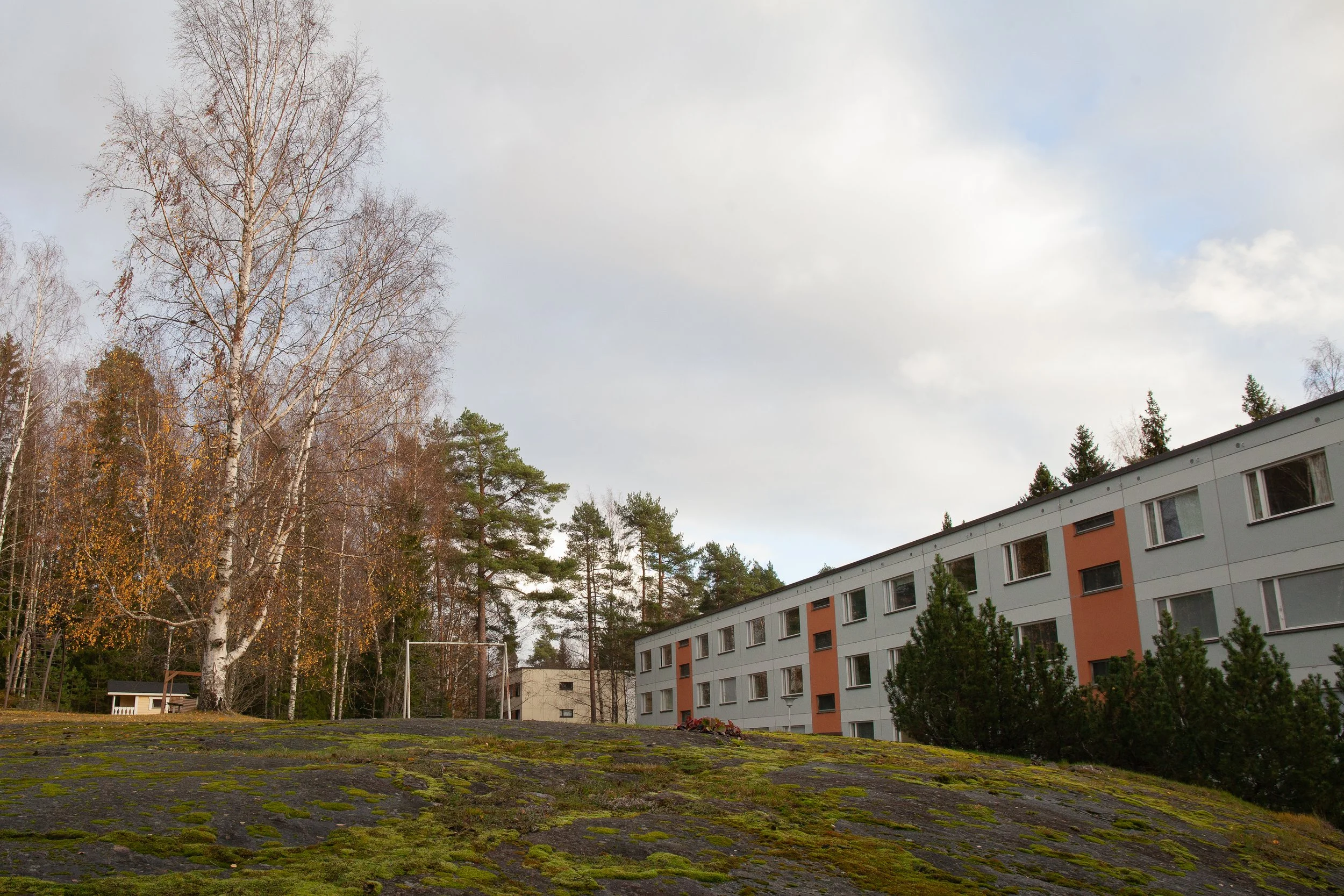
Challenge
Peltolammi and Multisilta are suburban neighborhoods located within 10km from the city center and surrounded by nature.
Until recently, the neighborhoods had not been maintained or developed to the desired extent and the number of services in the area had decreased. The neighborhood is home to various resident groups with special needs who are dependent on the services and public transit connections. Also undesired social issues, such as segregation and social exclusion of certain groups, had started to develop.
The neighborhoods are currently being developed by the city, and the number of residents and services are expected to grow. With the suburban development programme an opportunity had emerged to improve the public image, resident communication and the quality of living in the area for all residents. In order to achieve these goals, understanding of resident needs and stakeholder participation was needed.
Photo: Susanna Lyly -

Approach
An extensive co-design process was conducted throughout the project to ensure the participation of all key stakeholders, such as urban planners and local service providers, as well as different resident groups.
Several resident events were organized along with 15+ workshops for internal and external stakeholders, both online and offline. Through local service providers and NGO’s we were able to reach groups who typically do not participate in city planning processes to the desired extent, such as children and youth, elderly, immigrants and residents with special needs.
Building on existing research, our team started by identifying the current strengths, weaknesses, opportunities and threats from the residents’ point of view, that helped identify themes for development. We also identified the most challenging areas to be developed. Later in the process, residents have had the opportunity to participate in different projects, such as the renewal of local park, playground and lighting of public spaces.
Photo: Susanna Lyly
-

Outcomes
There were multiple outcomes that were delivered during the long collaboration.
Among the deliverables were an area brand identity and brand book that have been applied in both physical and digital channels, as well as in citizen communication. The brand has been co-designed together with residents, city and stakeholders. In the brand book, we identified the visual identity, target groups, relevant channels and contents, as well as some recommended brand applications.
Other outcomes have included guidelines for the area development for the city and urban planners, several community events and iterated plans for public space development. For example, our team took part in the development of local park Multisillanpuisto, where residents participated in defining and commenting on the functions, layout, landscape and elements of the park and playground.
Photo: Linda Vanni
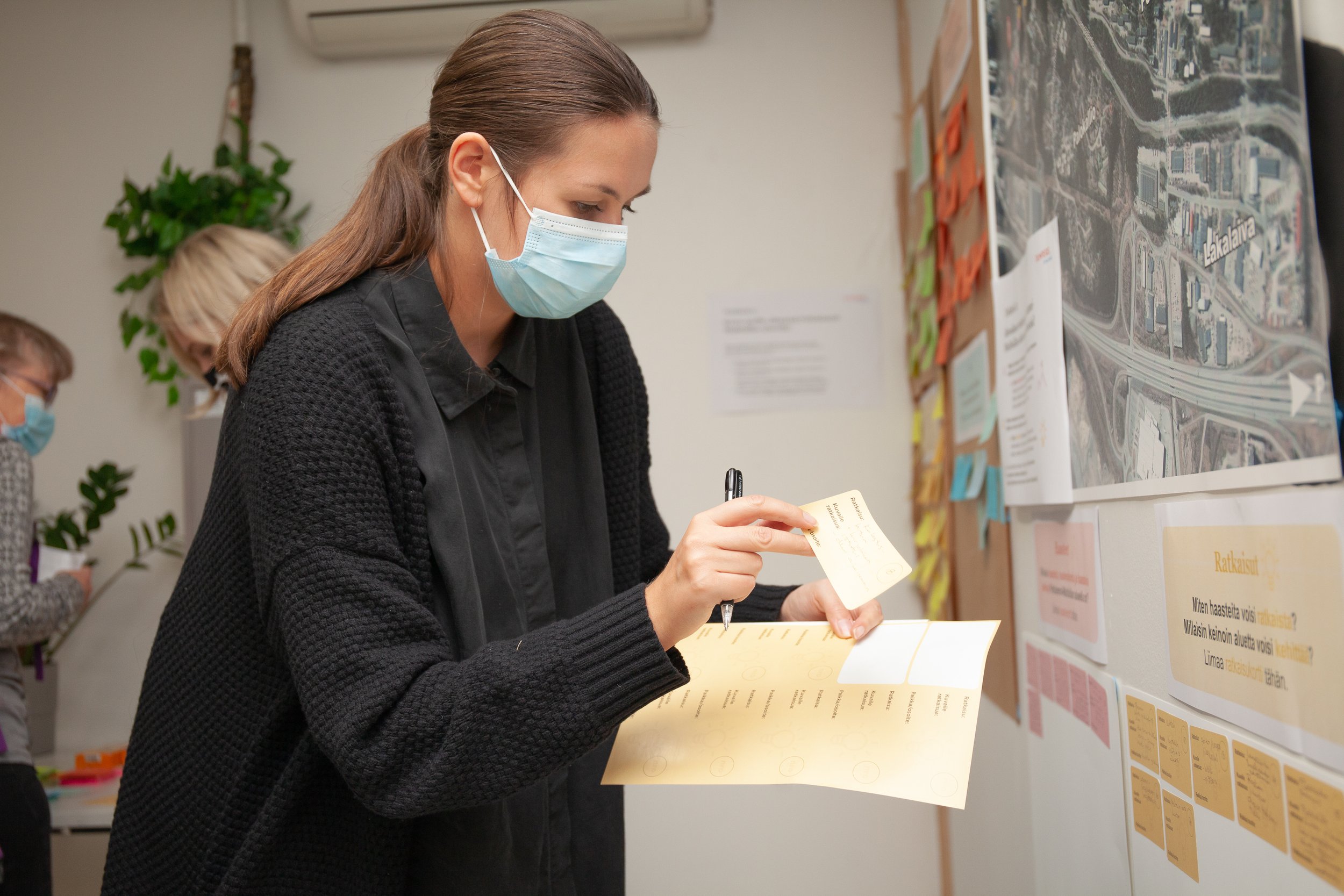
Photos: Susanna Lyly
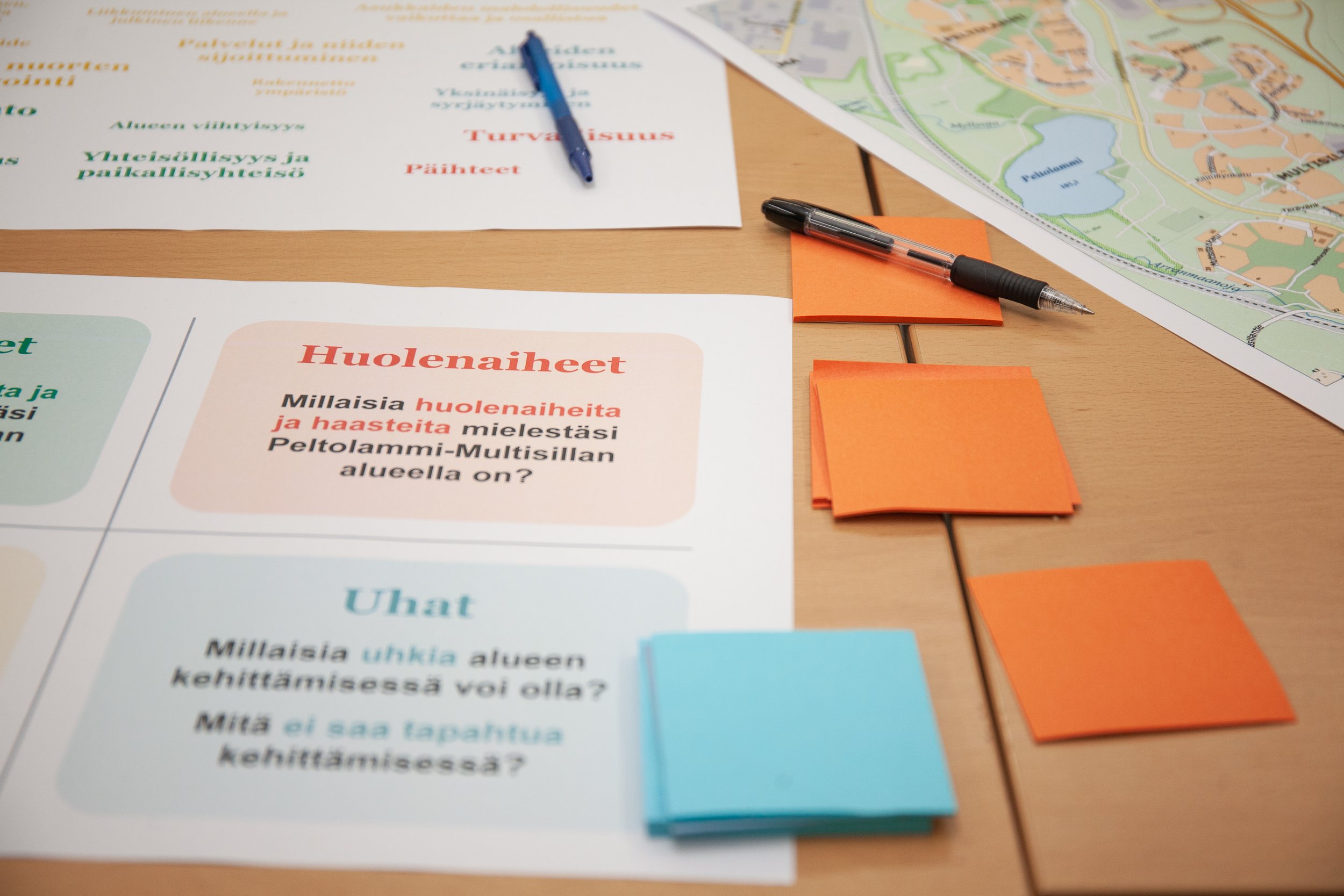
Key findings
Four themes were identified to guide the development process: 1. Thriving residents and wellbeing, 2. Comfortable urban environment for everyday living, 3. Accessible local services, and 4. Community and participation.
The first theme focuses on increasing the wellbeing and preventing the social exclusion of different resident groups and especially families with children. It was identified that there are many families who need social support, and children and youth were lacking safe places to meet their friends or engage in a desired hobby.
The physical environment provides facilities for everyday living, activities and community engagement. Many residents considered the environment to feel unsafe and uncomfortable, and the public spaces in the area to be neglected. Improving the surrounding environment and public spaces would hence strengthen the wellbeing of people.
The number of services in the area had been decreasing, and many essential services had been relocated further away. By providing better services and making sure they are easily accessible by different modes of transportation, the appeal of the area can be increased.
In the fourth theme it was recognized that community and participation strengthen social cohesion, mutual understanding and a sense of belonging. Thus it is important to provide facilities, spaces and activities that engage all resident groups and communities.

Photos: Laura Happo

Read more about the project:
Peltolammin-Multisillan lähiöohjelma 2020-2022
Read more here
Kaupunginosakehittämisen opas
Read more here

